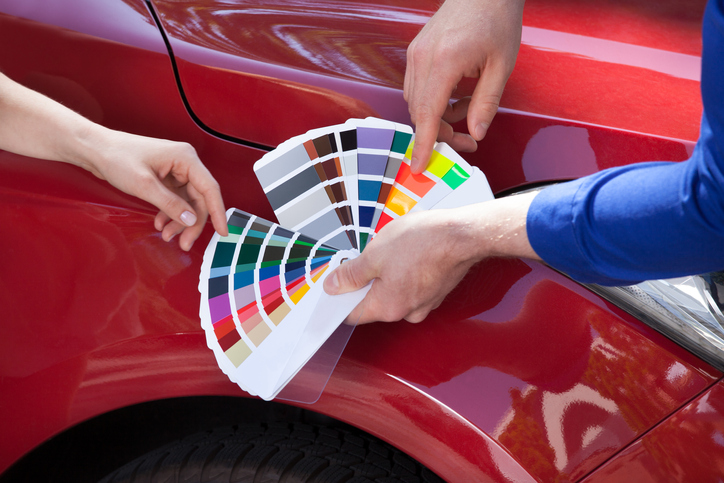June is Car Safety Month
You’ve likely read many tips for Car Safety Month: check your car’s tire pressure, top off the fluid levels, get that peck on your windshield fixed before it spreads. But did you know the color of your car may matter when it comes to safe driving? Some colors are considered safer than others.
Working with data from the most recent study by the Monash University Accident Research Centre (MUARC) on this topic, the Kelley Blue Book’s newest report suggests that safer colors are the ones that stand out more on the road, in all weather conditions and road conditions.
The Safest Car Colors
MUARC’s determination is that white is the safest vehicle color. Why?
In all types of weather and lighting, the visibility of a white vehicle rates much higher, particularly at night. In fact, the study showed there is a 12 percent less chance of accident involvement in a white car than a black one.
Which other colors are thought to be more safe? Yellow is first in line after white for vehicle safety. Yellow cars are easy to spot, which is why this has been the preferred color for taxi drivers.
Orange weighs in as safe, partly because not many carmakers use this color, so its “uniqueness” value makes it stand out. Other safer colors include gold, cream, beige, and off-white.
The Least Safe Colors
While a car’s safety rating does not take color into consideration, the vehicle color that tests the lowest on the safety scale is black, which is harder to spot at night; followed by dark blue, also difficult to spot in the evening, along with gray, sliver, and sometimes, red. Red shades may tend to blend with stop signs or brake lights, and may look vibrant on sunny days, but not so much when the sun is down.
With visibility in mind, you may want to consider your surroundings when choosing a car color. For example, if you live in a rural area with large swaths of trees, foliage, and grass along your everyday commute, a green car may not stand out as well. If you live in a desert area, cream- or beige-colored cars can very easily blend in with the roadside environment.
You may also want to consider that metallic hues, especially on silver or champagne shades, can reflect light more easily and could blind oncoming traffic. This may affect drivers in wet, rainy or heavy snow areas the most.
Resale Value
If you’re shopping for a car now, consider that a vehicle’s color may someday affect its resale value. A trendy color today may not be so popular in three to five years, so your candy apple red SUV may stand out for the wrong reasons by 2025. Classic colors tend to hold their value longer.
Other Considerations
- Lighter-colored cars stay somewhat cooler to drive in hot climates because they don’t absorb as much sunlight. White cars are the coolest of all, while black cars are the warmest. If the added distraction of being in a hot car until it cools down matters to you, keep this in mind before you purchase your next car.
- In case you wondered, insurance companies do not take the color of your car into consideration when they are figuring the cost of your new policy.
- You should consider color when you are shopping for a car. However, make your ultimate choice according to your own personal preferences, your personality, and your tastes. What is much more important is your own safe driving, the visibility and weather conditions on the road, and the condition of your car.
Now, go get that tire pressure checked—this is Car Safety Month after all.
Be Safe on the Road with Farm Bureau Insurance
Get a risk-free quote on high-quality, affordable car insurance from Louisiana Farm Bureau Insurance. Start by using our Agent Finder to reach a local agent near you.

